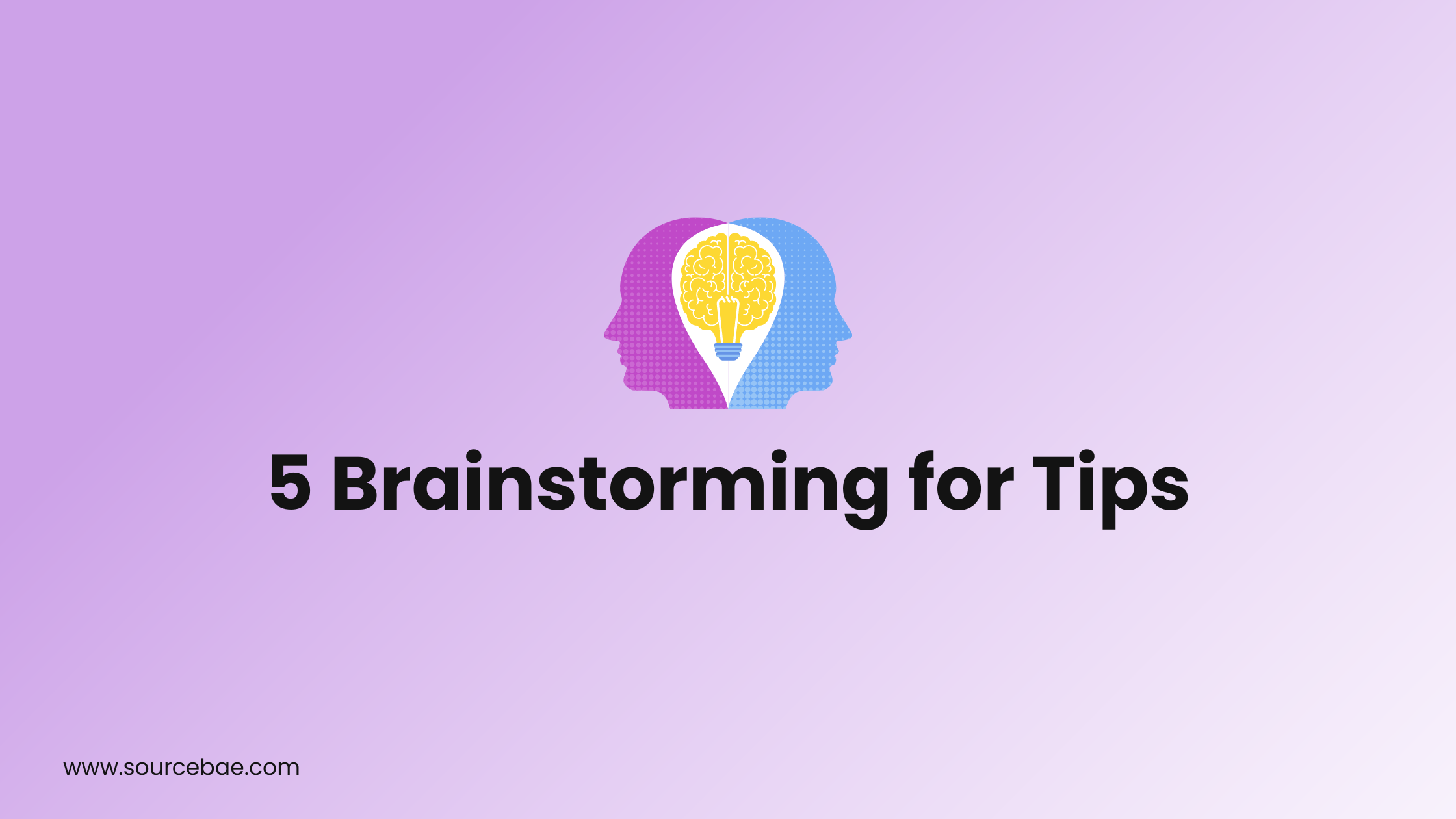In today’s fast-paced world, innovation and creativity are essential for staying ahead. Whether you’re an entrepreneur, a student, or a professional, mastering the art of brainstorming can be a game-changer. In this article, we will delve into the “5 Brainstorming for Tips” that will help you unlock your creative potential and drive success in various aspects of your life.
5 Brainstorming for Tips
When it comes to brainstorming, having a solid strategy can make all the difference. These five tips will empower you to brainstorm effectively and generate innovative ideas:
Embrace Diverse Perspectives
To foster creative thinking, surround yourself with a diverse group of individuals who bring unique viewpoints to the table. LSI Keywords: Creative collaboration, diverse ideas. Engage in open discussions where each person’s input is valued, creating a melting pot of thoughts that can spark groundbreaking concepts.
Create a Stimulating Environment
Your surroundings can greatly impact your creativity. Find a conducive environment free from distractions where you can immerse yourself in the brainstorming process. LSI Keywords: Creative space, focus. Consider using tools like colorful visuals, mind maps, and even ambient music to enhance your brainstorming sessions.
Think Outside the Box
Challenge yourself to break away from conventional thinking patterns. LSI Keywords: Innovative ideas, unconventional solutions. Encourage participants to explore wild and unorthodox ideas without fear of criticism. Often, the most unconventional ideas lead to the most remarkable breakthroughs.
Use Brainstorming Techniques
There are various brainstorming techniques that can fuel your creative fire. LSI Keywords: Idea generation methods, creative strategies. Techniques like mind mapping, SWOT analysis, and the six thinking hats can provide structured frameworks to generate ideas from different angles, ensuring no stone is left unturned.
Embrace Failure as a Stepping Stone
Not every brainstorming session will yield a golden idea, and that’s perfectly fine. LSI Keywords: Learn from failure, iterate ideas. Embrace failure as a natural part of the creative process. Analyze why certain ideas didn’t work and use those insights to refine and improve your next brainstorming endeavor.
Exploring Techniques and Examples
Let’s delve deeper into these brainstorming tips by exploring techniques and real-world examples:
Technique 1: Mind Mapping
Mind mapping is a visual technique that helps you organize your thoughts and ideas in a nonlinear way. LSI Keywords: Visual ideation, interconnected concepts. Start with a central idea and branch out into related concepts, allowing you to see connections and patterns that might not be apparent with traditional lists.
Example: Product Innovation
Imagine you’re brainstorming ideas for a new product. Create a mind map with the central concept of the product. Branch out into categories like features, target audience, and marketing strategies. This approach can lead to innovative combinations and holistic product development.
Technique 2: SWOT Analysis
SWOT analysis stands for Strengths, Weaknesses, Opportunities, and Threats. LSI Keywords: Strategic planning, competitive analysis. Apply this technique by listing these four categories and analyzing your project, idea, or situation. This structured approach helps you uncover potential roadblocks and leverage your strengths.
Example: Business Expansion
If you’re considering expanding your business, conduct a SWOT analysis. Identify your strengths in terms of brand reputation and customer loyalty. Recognize weaknesses like limited resources and potential market challenges. Explore opportunities in emerging markets and pinpoint threats posed by competitors.
Technique 3: Six Thinking Hats
Developed by Edward de Bono, the six thinking hats technique encourages participants to approach problems from different perspectives. LSI Keywords: Multifaceted ideation, parallel thinking. Assign each “hat” a color and role, such as logical thinking (white hat) or emotional intuition (red hat). This method fosters comprehensive exploration of ideas.
Example: Event Planning
Suppose you’re organizing a large-scale event. Utilize the six thinking hats by assigning different team members to each hat. The white hat thinker can focus on logistics and budget, while the green hat thinker generates innovative entertainment ideas. This approach ensures a holistic event planning process.
Frequently Asked Questions (FAQs)
How can I overcome creative blocks during brainstorming sessions?
Creative blocks are common, but you can overcome them by changing your environment, taking short breaks, and engaging in activities that inspire you. Additionally, collaborating with others can provide fresh perspectives and help overcome mental roadblocks.
Is brainstorming more effective in groups or individually?
Both individual and group brainstorming have their merits. Individual brainstorming allows for deep introspection, while group brainstorming fosters diverse ideas through collaboration. Consider using a combination of both approaches for optimal results.
What do I do with a surplus of ideas generated during a brainstorming session?
When you have an abundance of ideas, prioritize and categorize them based on feasibility and alignment with your goals. Select the most promising ones and create an action plan for implementation. Don’t discard the rest—store them for future reference.
How do I maintain focus and prevent idea tangents?
To maintain focus, clearly define the goal of your brainstorming session beforehand. If discussions start to deviate, gently redirect the conversation back to the main objective. Having a facilitator can also help guide the discussion and keep it on track.
Can brainstorming be used for personal development?
Absolutely! Brainstorming is a versatile technique that can be applied to personal growth. Whether you’re setting new goals, planning a career change, or seeking creative hobbies, brainstorming can help you explore options and chart a path forward.
What role does feedback play in the brainstorming process?
Feedback is invaluable in refining ideas generated during brainstorming. Sharing your ideas with others and receiving constructive feedback can help identify potential flaws and areas for improvement. Constructive criticism can lead to more robust and polished concepts.
Conclusion
Incorporating effective brainstorming techniques into your routine can revolutionize your problem-solving abilities and open doors to innovation. By embracing diverse perspectives, creating a conducive environment, thinking outside the box, utilizing techniques, and learning from failures, you’ll be equipped to generate ideas that can drive your success in various spheres of life.
Remember, brainstorming is not only about coming up with groundbreaking concepts—it’s also about the journey of exploration and growth. So, go ahead and put these “5 Brainstorming for Tips” into action, and watch your creativity flourish.





